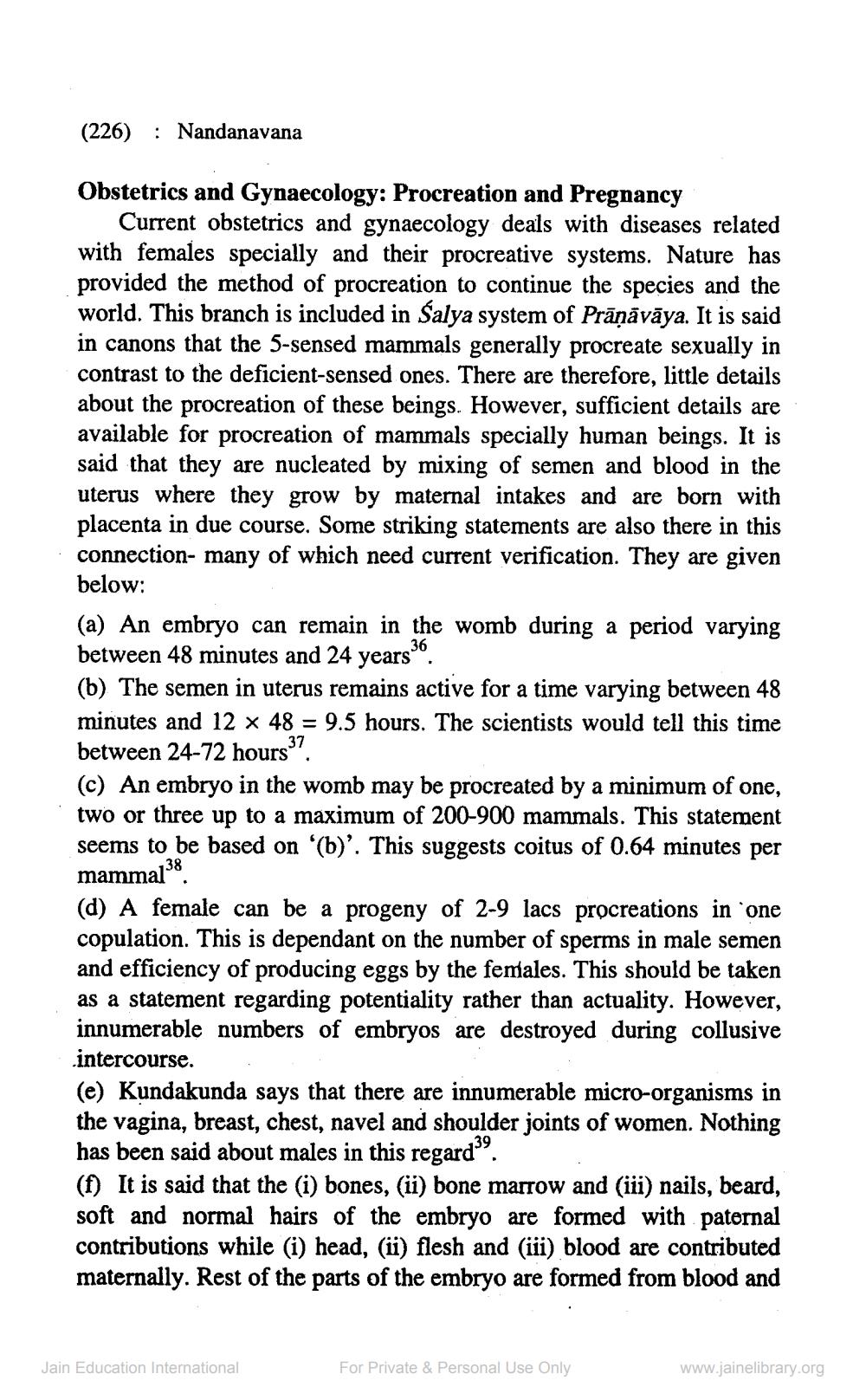________________
(226) : Nandanavana
Obstetrics and Gynaecology: Procreation and Pregnancy
Current obstetrics and gynaecology deals with diseases related with females specially and their procreative systems. Nature has provided the method of procreation to continue the species and the world. This branch is included in salya system of Prāņāvāya. It is said in canons that the 5-sensed mammals generally procreate sexually in contrast to the deficient-sensed ones. There are therefore, little details about the procreation of these beings. However, sufficient details are available for procreation of mammals specially human beings. It is said that they are nucleated by mixing of semen and blood in the uterus where they grow by maternal intakes and are born with placenta in due course. Some striking statements are also there in this connection- many of which need current verification. They are given below: (a) An embryo can remain in the womb during a period varying between 48 minutes and 24 years.. (b) The semen in uterus remains active for a time varying between 48 minutes and 12 x 48 = 9.5 hours. The scientists would tell this time between 24-72 hours". (c) An embryo in the womb may be procreated by a minimum of one, two or three up to a maximum of 200-900 mammals. This statement seems to be based on '(b)'. This suggests coitus of 0.64 minutes per mammals. (d) A female can be a progeny of 2-9 lacs procreations in one copulation. This is dependant on the number of sperms in male semen and efficiency of producing eggs by the females. This should be taken as a statement regarding potentiality rather than actuality. However, innumerable numbers of embryos are destroyed during collusive intercourse. . (e) Kundakunda says that there are innumerable micro-organisms in the vagina, breast, chest, navel and shoulder joints of women. Nothing has been said about males in this regard”. (f) It is said that the (i) bones, (ii) bone marrow and (iii) nails, beard, soft and normal hairs of the embryo are formed with paternal contributions while (i) head, (ii) flesh and (iii) blood are contributed maternally. Rest of the parts of the embryo are formed from blood and
Jain Education International
For Private & Personal Use Only
www.jainelibrary.org




